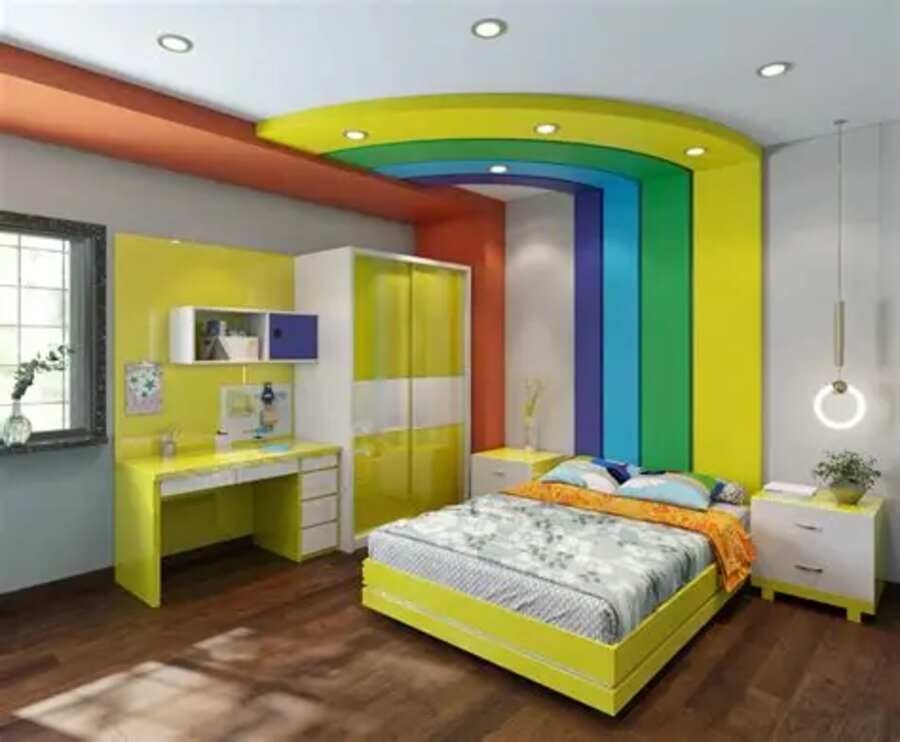Kids’ Room Ideas: Building Safe, Functional, and Motivating Environments

Designing a child’s room goes far beyond color palettes and cute accessories. A truly effective kids’ space must balance safety, functionality, and inspiration—supporting both play and development while adapting to a child’s changing needs. Whether it’s for a newborn nursery or a teen’s study area, the right design choices can turn an ordinary room into a motivating, future-ready environment.
1. Start with Safety: The Non-Negotiable Foundation
Every great kids’ room idea begins with safety. Children explore their environments fearlessly, which makes the layout, materials, and furniture selection critical.
Rounded corners and sturdy builds: Opt for furniture with smooth edges and stable bases to prevent tip-overs. Wall-mounting tall pieces like wardrobes or bookshelves adds another layer of protection.
Non-toxic materials: Prioritize paints, fabrics, and finishes certified as low-VOC or eco-friendly. Kids spend hours in these spaces, and indoor air quality directly affects their health and focus.
Soft landings: Use plush rugs, rubber mats, or cork flooring to cushion inevitable tumbles, especially in play zones.
Safety should blend seamlessly with aesthetics. Modern brands now design cribs, study desks, and storage systems that meet global safety standards without compromising on style—a reassuring development for design-conscious parents.
2. Functionality That Grows with the Child
Children grow quickly, and their rooms should grow with them. Designing adaptable spaces reduces waste, saves money, and keeps the environment aligned with a child’s evolving interests.
Smart, modular furniture is the cornerstone of functional kids’ room design. Adjustable desks, convertible beds, and stackable storage units make it easy to reconfigure layouts as kids move from playtime to homework to creative hobbies.
Convertible pieces: A crib that transforms into a toddler bed or a study table that adjusts in height adds years of usability.
Flexible storage: Open shelves for toys can later store books and art supplies. Use bins or baskets to keep the room organized—teaching kids responsibility early on.
Multi-use zones: Create defined but adaptable zones for sleep, play, and study. Use rugs or lighting to subtly separate each function without walls or barriers.
The goal is to design for change. A well-thought-out layout can evolve effortlessly from preschool to preteen.
3. Inspire Creativity and Motivation
A child’s environment influences how they think, play, and learn. Kids’ room ideas that integrate visual stimulation with calm structure can boost creativity and motivation.
Color psychology plays a key role.
Warm tones like yellow and coral promote happiness and confidence.
Cool hues such as mint or light blue encourage focus and calm.
Neutral bases—white, beige, or soft grey—help the space feel open and allow furniture and artwork to shine.
Incorporate interactive elements to foster imagination. Chalkboard walls, art stations, and magnetic boards invite kids to create and explore freely. For readers, a cozy nook with layered cushions and warm lighting can make reading a daily habit rather than a task.
The best children’s rooms tell a story. Whether it’s a space-themed bedroom, a mini jungle, or a serene modern studio, the theme should align with the child’s personality—not overwhelm it. Choose quality over clutter, leaving room for imagination to fill the gaps.
4. Bring in Natural Elements
Nature-based design helps create a soothing atmosphere and nurtures emotional well-being.
Lighting: Maximize daylight. Use sheer curtains to let natural light flood in, supplemented by soft, dimmable LED fixtures for the evening.
Green touches: Add low-maintenance plants or botanical prints to connect the indoors with nature. Even subtle greenery can reduce stress and improve air quality.
Sustainable materials: Bamboo, wood, and organic fabrics add warmth while promoting eco-conscious values.
Sustainability isn’t just a trend—it’s an educational opportunity. Children raised in environmentally mindful spaces often grow into adults who value sustainability themselves.
5. Technology and Smart Features for Modern Families
Incorporating technology doesn’t mean sacrificing simplicity. The latest smart kids’ room products enhance safety and comfort while remaining discreet.
Smart lighting systems can mimic daylight cycles, supporting better sleep patterns.
Monitored air purifiers ensure clean air, especially in urban environments.
Voice-activated assistants help with study routines and reminders—though they should be introduced with parental supervision.
By blending traditional comfort with modern innovation, families can craft rooms that are both forward-looking and nurturing.
6. Final Thoughts: Spaces That Evolve and Inspire
The most successful kids’ room ideas balance safety, adaptability, and inspiration. A child’s room should be more than just a place to sleep—it should be a world where curiosity thrives and confidence grows.
PVC Board: Design with intention, invest in quality, and remember that every color choice, furniture decision, and lighting adjustment contributes to a child’s daily experience. The right environment doesn’t just decorate a space—it shapes the way children see the world and themselves.
- Questions and Answers
- Opinion
- Motivational and Inspiring Story
- Technology
- Live and Let live
- Focus
- Geopolitics
- Military-Arms/Equipment
- Security
- Economy
- Beasts of Nations
- Machine Tools-The “Mother Industry”
- Art
- Causes
- Crafts
- Dance
- Drinks
- Film/Movie
- Fitness
- Food
- Games
- Gardening
- Health
- Home
- Literature
- Music
- Networking
- Other
- Party
- Religion
- Shopping
- Sports
- Theater
- Health and Wellness
- News
- Culture

